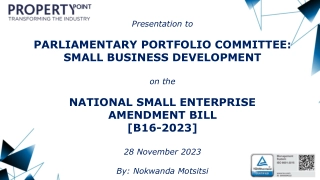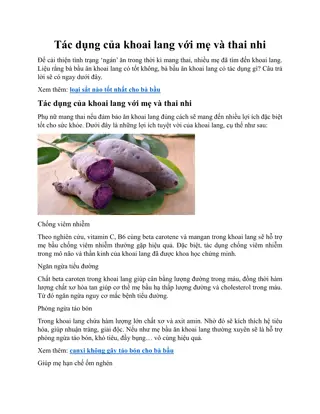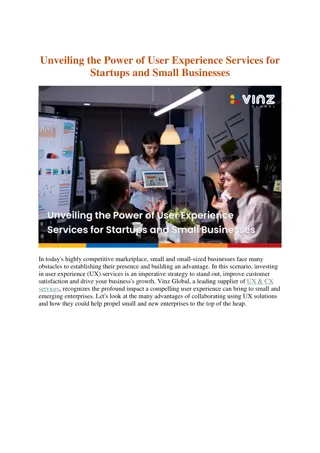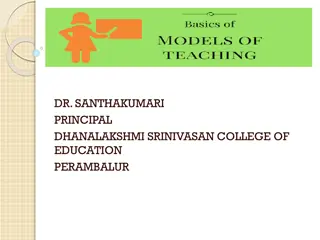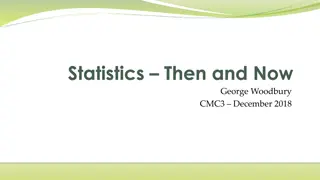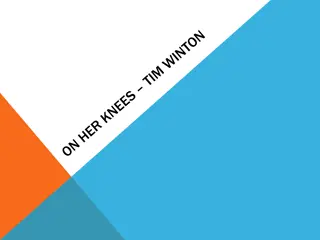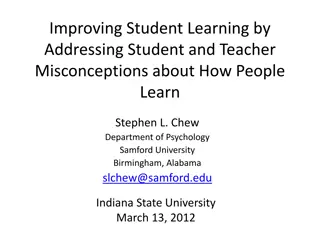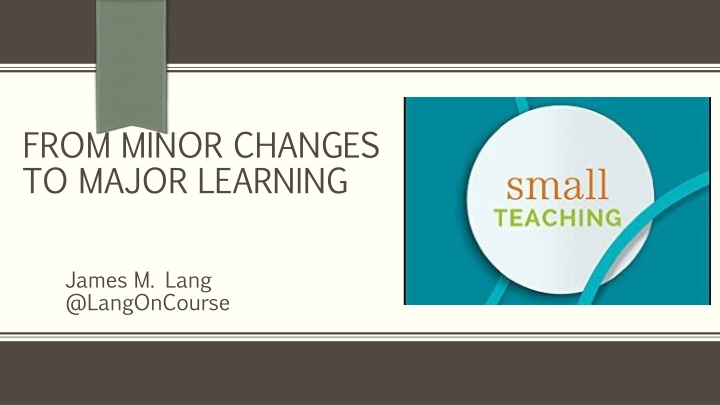
Enhancing Learning Strategies for Educators: From Minor Changes to Major Innovations
Explore innovative teaching methods, such as pausing for learning, small teaching interventions, motivating learners, and more to enhance student engagement and comprehension. Dive into strategies to build a dynamic learning experience and motivate learners effectively.
Download Presentation

Please find below an Image/Link to download the presentation.
The content on the website is provided AS IS for your information and personal use only. It may not be sold, licensed, or shared on other websites without obtaining consent from the author. If you encounter any issues during the download, it is possible that the publisher has removed the file from their server.
You are allowed to download the files provided on this website for personal or commercial use, subject to the condition that they are used lawfully. All files are the property of their respective owners.
The content on the website is provided AS IS for your information and personal use only. It may not be sold, licensed, or shared on other websites without obtaining consent from the author.
E N D
Presentation Transcript
FROM MINOR CHANGES TO MAJOR LEARNING James M. Lang @LangOnCourse
Pausing for Learning In the current study the procedure consisted of pausing for 2 minutes 3 times during each 45-minute lecture. During the pause, subjects formed dyads and discussed lecture content (e.g., asked each other for clarification of concepts or caught up on notes). No instructor-subject interaction occurred during the pauses. Chart Title 120 100 80 60 40 20 0 Pause No Pause Class 1 Class 2
Small Teaching Innovations Brief Brief (5-15 minute) interventions into individual learning sessions Limited Limited number of interventions or activities within an entire course Minor Minor changes to course design, assessment structure, or communication with students
A Box of Content The focus of this course is on nutrient uptake and translocation, nutrient deficiency symptoms, plant primary and secondary metabolism, physiological responses to biotic and abiotic stresses, hormones and signal transduction, defense and immune responses. The laboratory component of this course will provide opportunity for students to have hands on experience and assess plants physiological behavior by determining metabolites content and enzymes activities and studying hormones and nutrients.
What the Best Teachers Do Problems Questions Challenges
Building a Learning Experience 1. Articulate Problem or Question 2. Explain Significance or Relevance 3. Give Students Opportunity to Answer 4. Provide Answer 5. Conclude with Problem or Question
Motivating Learners Open your course or syllabus with descriptions of the problems, questions, or challenges of your course. Open individual class periods with the presentation of a problem, question, or challenge. Consider the use of both puzzles and mysteries to foster the curiosity of your students.
PREDICTION Preparing Students to Learn
The Power of Prediction 80% 70% 60% 50% 40% 30% 20% 10% 0% Untested Content Pre-Tested Content Exam Scores
Prediction in Theory: Fluency Illusions Wrong guesses expose our fluency illusions, our false impression that we know the capital of Eritrea because we just saw it or once studied it. Benedict Carey
Prediction in Theory: Fertile Grounds Unsuccessful attempts to solve a problem encourage deep processing of the answer when it is later supplied, creating fertile ground for its encoding, in a way that simply reading the answer cannot. Roediger et al
Small Teaching: Prediction At the beginning of a course or class period give students brief (ungraded) pre-test or challenge. Ask (poll) questions at the beginning of class; return to them at the end, after first content exposure. Use individual or group brainstorming activities that help students activate knowledge from previous courses.
RETRIEVAL Strengthening Foundational Knowledge
Knowledge: The Hidden Power of Cognition Learning skills grow organically out of specific knowledge domains that is to say, facts . . . The wider your knowledge, the more widely your intelligence can range and the more purchase it gets on new information. Ian Leslie, Curious
The Power of Retrieval Practice 50% 45% 40% 35% 30% 25% 20% 15% 10% 5% 0% No Activity Focused Study Multiple Choice Short Answer 30-Day Results
Limits of Long-Term Memory In long-term-memory the limiting factor is not storage capacity, but rather the ability to find what you need when you need it. Long-term memory is rather like having a vast amount of closet space it is easy to store many items, but it is difficult to retrieve the needed item in a timely fashion. Michelle Miller
Small Teaching: Retrieval Open class by asking students to remind you of previous content or summarize readings. Close class by asking students to write down the most important concept from that day (i.e., the minute paper) and one remaining question. Use polling or free recall activities halfway through class in order to renew attention and prepare for new learning.
More Information and Resources . . . Small Changes in Teaching RetrievalPractice.org The Learning Scientists Best Teachers Summer Institute @LangOnCourse

